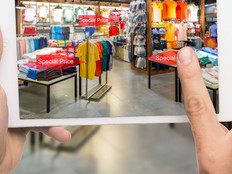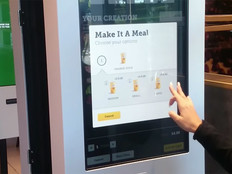How the Cloud and Analytics Can Save Retailers a Bundle
What is a guaranteed way for a retailer to lose a potential customer’s business? Not having the item a customer wants to buy.
A clear way around that loss is to better predict customer demand for particular products, so that store shelves are not just full, but filled with just the right items.
Retailers are turning to a range of cloud-based tools and artificial intelligence to analyze a variety of factors that help make their inventories more efficient — and save money in the process.
Using AI and Machine Learning to Optimize Inventories
Blue Yonder, which uses artificial intelligence and machine learning applications to aid retailers, last month partnered with U.K.-based grocery chain Morrisons to optimize product replenishment and automate ordering of 26,000 products in all its 491 stores.
So far, according to Blue Yonder, the technology is improving product availability, and the ordering system is reducing shelf gaps by up to 30 percent. The Blue Yonder system “automatically analyzes sales data and other data sources from Morrisons and combines this with external data such as weather forecasts and public holidays,” Blue Yonder says.
Via automated analysis of all the data, the system can predict the level of demand down to the individual product and store location, Blue Yonder says, and then fully automates ordering per store and per product. The Software as a Service (SaaS) system automates more than 13 million ordering decisions per day. Blue Yonder’s system relies on Microsoft’s Azure cloud platform.
Using machine learning technology — a subset of AI which uses algorithms to detect patterns, and then can predict outcomes and potentially operate autonomously — the system learns as it goes and can use a vast and complex amount of data to make highly accurate ordering decisions, according to Blue Yonder.
According to Alex Siskos, president of Blue Yonder, North America, this may sound simple, but it's a complex process affected by many independent factors including suppliers, retailers, warehouses and stores. Ensuring optimal availability, through shelf gap relief programs such as this one, is important to everyone in the industry.
Thanks to the system, employees no longer need to spend time manually ordering goods, which frees up their time for other tasks, such as helping customers. Additionally, customer satisfaction improves when stores have what they want. Blue Yonder reported in January that it conducted a survey that found that 81 percent of shoppers say they are unable to get produce they want in store, online and at discount retailers. Additionally, 30 percent of all shoppers abandoned their carts if they were unable to find the produce they wanted, with 28 percent saying that they felt unsatisfied when buying a similar product as a substitute.
Retailers Can Use the Cloud and AI to Gain Efficiencies
Of course, Blue Yonder is not the only company using such tools to help retailers.
Last month, Optimove, which also deploys SaaS cloud services for the retail market, announced two new features in its platform: product recommendations and replenishment.
“Using Optimove’s machine learning algorithms, these features allow retailers to give more personalized product and replenishment recommendations to their customers based not just on past purchases, but also on predictions of customer intent drawn from a complex web of data points in their [customer relationship management] system,” Optimove said in a statement.
Oracle also announced last month that its Oracle Retail Merchandising Solutions are now available as a service via the Oracle Cloud. The retail solution, Oracle said in a statement, is a SaaS offering that includes role-based dashboards that surface relevant buying, inventory and financial information to the user, and “leverage retail science and data analytics to accelerate critical decision making and take action.”
All these tools can help retailers be more efficient, cut costs and improve their relationship with customers.
“To deliver the best customer experience, while also turning a profit, it is vitally important for grocery retailers to optimize on-shelf availability and get their replenishment right,” Siskos told FierceRetail. “Best-in-class grocery and fashion retailers are using machine learning and advanced analytics to create an adaptive, intelligent supply chain that helps remove the uncertainty, risk and complexity of demand planning, pricing and replenishment to deliver impressive returns and deliver the best customer experiences.”









